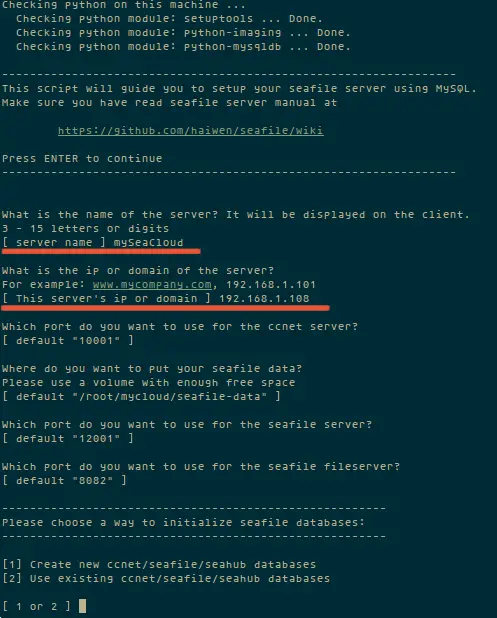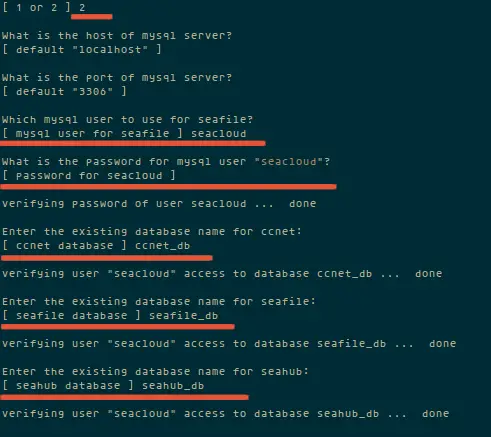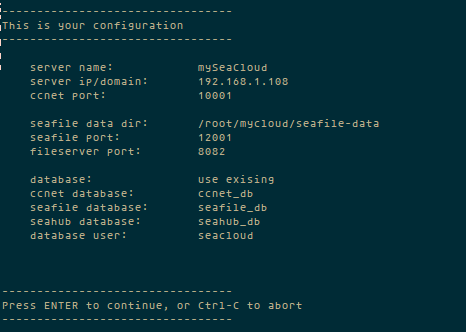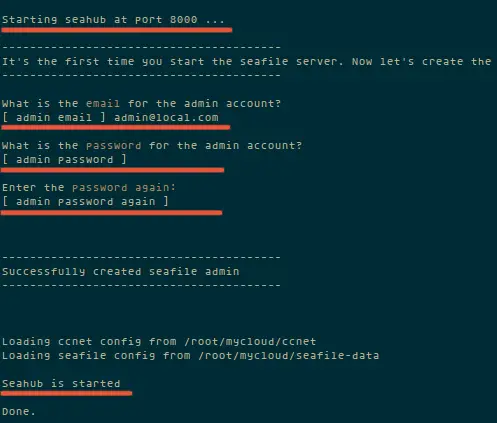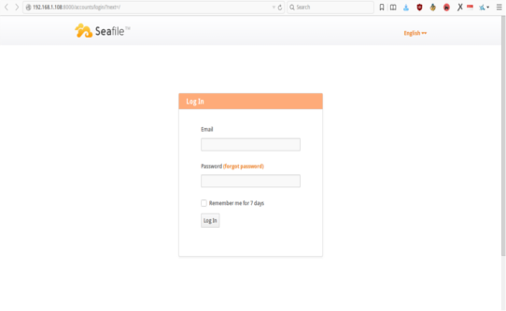How to Install Seafile on Ubuntu 15.04 (Vivid Vervet)
This tutorial exists for these OS versions
- Ubuntu 22.04 (Jammy Jellyfish)
- Ubuntu 20.04 (Focal Fossa)
- Ubuntu 18.04 (Bionic Beaver)
- Ubuntu 16.04 (Xenial Xerus)
- Ubuntu 15.04 (Vivid Vervet)
On this page
Seafile is a private cloud such as Dropbox, mega.co.nz and others. Seafile is based on python and it is open source, so that you can create your own private cloud and it will be much more secure.
Seafile supports encryption libraries that make your data will be more secure. To encrypt files in a library, you need to set a password when you create the library. The password won't be stored on Seafile cloud. So even the adminastrator of the servers cannot view your encrypted data without the password.
This tutorial shows the installation of Seafile on Ubuntu 15.04.
Prerequisites
- A Server with 2GB RAM
- Ubuntu 15.04 64-bit
Installing Seafile
Step 1 - Install the necessary Dependencies
To perform the installation, the seafile need some dependencies:
- openjdk-7jre
- LibreOffice
- Popler-utils
- mysql-server
- Python-pip etc.
apt-get install openjdk-7-jre poppler-utils libreoffice libreoffice-script-provider-python libpython2.7 python-pip mysql-server python-setuptools python-imaging python-mysqldb python-memcache ttf-wqy-microhei ttf-wqy-zenhei xfonts-wqy python-pip
Install boto with pip:
pip install boto
Step 2 - Download and Extract the Seafile
Seafile can be downloaded from the official site, please download according to your needs. Here I use Ubuntu 15.04 64-bit.
Download the Seafile archive with wget:
cd /tmp/
wget https://bitbucket.org/haiwen/seafile/downloads/seafile-server_4.1.2_x8664.tar.gz
Create the directory:
sudo su
mkdir -p /root/mycloud/installed/
Move the files:
mv seafile-server_4.1.2_x8664.tar.gz /root/mycloud/
cd /root/mycloud/
And extract the archive:
tar -xzf seafile-server_4.1.2_x8664.tar.gz
mv seafile-server_4.1.2_x8664.tar.gz installed/
So the directory for the installation of seafile is /root/mycloud/.
Step 3 - Create the Database
Seafile requires 3 databases:
- ccnet server
- seafile server
- seahub
Now please login to your mysql, create one user and grant to the databases.
Login to mysql:
mysql -u root -p
Create 3 databases:
create database ccnet_db character set = 'utf8';
create database seafile_db character set = 'utf8';
create database seahub_db character set = 'utf8';
Create a user "seacloud"
create user seacloud@localhost identified by 'yourpassword';
And grant access for our user "seacloud" user to the databases:
grant all privileges on ccnet_db.* to seacloud@localhost identified by 'yourpassword';
grant all privileges on seafile_db.* to seacloud@localhost identified by 'yourpassword';
grant all privileges on seahub_db.* to seacloud@localhost identified by 'yourpassword';
flush privileges;
Step 4 - Run Setup File
Please go to the installation directory seafile. Once the file seafile-server_4.1.2_x8664.tar.gz been extracted will appear a directory seafile-server-4.1.2.
cd /root/mycloud/
cd seafile-server-4.1.2/
./setup-seafile-mysql.sh
Just press Enter and you will be ask about:
- Server Name
- Domain/IP
- etc
Than you will be ask too about the database. You can choose number 2 ,because you have created a user and database.
And in the end you just need to press Enter to confirm all configuration you have beed set up.
Step 5 - Starting Seafile and Seahub
Now all is done and lets start it by running seafile.sh and seahub.sh.
./seafile.sh start
./seahub.sh start
and fill your email and password.
Step 6 - Testing from your Browser
Open your browser 192.168.1.108:8000 and try to login with your admin account.
Conclusion
With the wide variety of cloud applications today, Seafile is a private cloud solution that is good for use on this day. With the encryption feature at the library/folder, you can make the data more secure. And also ease to configure it, make it easy to implement in your server.

